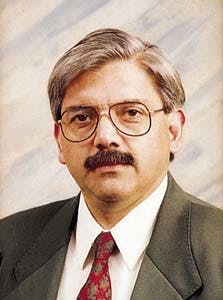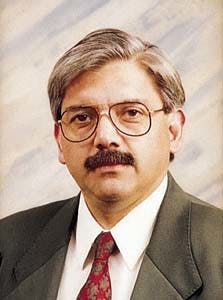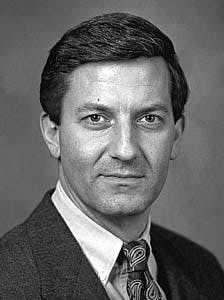Enrique Davila AlvealWhen partners in major debt-financed projects assume essentially all the risk elements themselves-thereby relieving lenders of these risks-and the financed project represents a strategically valuable asset, overall project costs can be sharply reduced.
Petrox SA Refineria de Petroleo
Concepcion, ChileMartin J. Karpenski
Foster Wheeler Power Systems Inc.
Clinton, N.J.
This was demonstrated earlier this year when Foster Wheeler Power Systems Inc. and its partners-Petrox SA Refineria de Petroleo and Empresa Nacional de Petroleo (ENAP), the Chilean national oil company-closed on the financing of Petropower Energia Limitada, a $237 million financed combination delayed coker-cogeneration facility. The facility is now under construction adjacent to Petrox's 84,000 b/d Talcahuano refinery, near Concepcion.
In addition to the low interest rate of 7.36%-only 170 basis points over the 10 year U.S. Treasury yield-the project was rated investment-grade by Standard & Poor's. The Petropower project also has the distinction of having the longest term-18 years-for any project financing in Latin America.
Of the total $237 million financed for engineering, procurement, and construction of the facility, approximately $162 million was financed through trust certificates sold under Rule 144A of the Securities Act, an avenue not often tapped in project financing. An additional $70 million in equity will be contributed by the partners.
The project is unique in other ways: It is the Republic of Chile's first public/private partnership and also the first project to combine petroleum coking technology with cogeneration technology in a single project financing.
Under Rule 144A of the Securities Act, certain high-quality (investment-grade) trust certificates are placed privately with qualified institutional buyers such as insurance companies, pension funds, and other large investors. Securities offered by this route are issued at significantly lower cost because they are offered without the added costs of underwriters' guarantees covering all risks associated with the project.
Typically, projects are financed through straight bank debt and export credit agency support. However, during the project development phase it became clear to Foster Wheeler Power Systems, Petrox, and ENAP that because of the inherent strength of the project these kinds of risk guarantees could best be assumed by the partners themselves, thus significantly reducing the overall cost of the project. After a great deal of analysis by the partners, financial advisors, investment bankers, and banking officials, the partners concluded that a 144A financing would be the most advantageous method of financing.
Risk assumption
As part of the strategy to allocate risks to those best able to bear them, it was decided that Foster Wheeler Corp., through its wholly owned subsidiaries, would assume full responsibility for construction (including engineering, procurement, construction management, and start-up) of the facilities. Foster Wheeler has extensive experience in coking technology, circulating fluidized-bed (CFB) combustion technology, and world-wide construction management.
Following completion of the facilities a process and service supply agreement will be the basic contract between Petropower and Petrox. This agreement stipulates that Petropower will make available to the Petrox refinery coker and hydrotreater services and steam and electric utilities. Petrox, in turn, is obligated to pay for the services and utilities on a take or pay basis for the 20 year term of the project. The obligation of Petrox is supported by a guarantee by ENAP.
Under the agreement Foster Wheeler Power Systems will take all risks associated with operation and maintenance of the cogeneration plant, while Petrox will assume operations and maintenance responsibility for the coker facility. Because of the project's exceptional technical and economic integrity, the partners' financial strength, and the strategic importance of the project to Petrox, these risks were judged by lenders to be negligible.
Even though Standard & Poor's assigned Chile an "A" rating, largely because of its strong track record in managing its economy and its history of political stability, Petropower's partners recognized that some prospective certificate holders might still perceive some gaps in coverage. Therefore, the partners deemed it prudent for Petrox to accept the following country-type risks:
- Changes in environmental laws that may affect operation or modification of the facility.
- Nationalization, war, politically motivated strikes, and governmental failure to issue and maintain approvals and permits.
- Foreign exchange risks, by requiring Petrox to make payments in pesos to Petropower, but denominated in U.S. dollars.
The fact that the partners themselves were able and willing to underwrite the risks that they could most logically bear, and for which bondholders traditionally receive a premium, to a large extent was reflected in the 7.36% interest rate at which the certificates were issued. This interest rate represented the tightest spread of any international bond-financed non-recourse project financing.
The Petropower project
The project is designed to enable Petrox to refine heavier crudes and enhance the refinery's flexibility and economics. When completed in mid-1998, the project will consist of a delayed coking facility (a 12,000 b/d delayed coking unit and a 7,000 b/d hydrotreating plant) and a 67 mw (59 mw net) cogeneration plant.
The coke produced will fuel a Foster Wheeler proprietary-design CFB boiler, which will generate all the high-pressure steam and electric power needed at the Petrox refinery. This will be the first CFB boiler to be built in Latin America.
The cogeneration facility will control SOx emissions from combustion of the green coke fuel and easily meet all Chilean environmental standards. In addition, by constructing the cogeneration facility, Petrox will not have to proceed with capital improvements to ensure a reliable source of steam and electricity. This will result in substantial savings for Petrox.
The cogeneration plant provides a permanent "disposal" for all coke produced by the delayed coker, thereby solving any future problems of unwanted or excess coke. Approximately 39 mw of excess electric power will be sold to local third parties (Fig. 1 [40562 bytes]).
Several Foster Wheeler subsidiaries will participate in the project in providing engineering, project management, equipment supply, construction, and operation services for the complex.
Foster Wheeler Power Systems will operate the cogeneration plant, and Petrox will operate the delayed coking and hydrotreating units.
Petropower organization
Petropower is 85% owned by Foster Wheeler Coque Verde LP, a special purpose Delaware limited partnership, whose sole general partner is Foster Wheeler Santiago Inc., a Delaware corporation indirectly wholly owned by Foster Wheeler Corp.
ENAP holds 7.5% of Petropower directly and another 7.5% indirectly through Petrox. ENAP has a 99.95% ownership in Petrox (Fig. 2 [48137 bytes]).
Constructora Foster Wheeler Concepcion Limitada (FW Concepcion), a Chilean company, has been formed for the purpose of constructing the facilities and operating the cogeneration plant.
Foster Wheeler Iberia SA, Madrid, Spain, a major operating company within Foster Wheeler's engineering and construction group, will subcontract substantially all the project work from FW Concepcion.
Delayed coker facility
The delayed coker, the facility's key process unit, will be designed, engineered, supplied, and constructed by FW Iberia to process vacuum residue supplied by the Petrox refinery.
Design feedstock for the unit is Tia Juana 24 crude oil, which has the approximate qualities: 6.0° gravity; 3.2 wt % sulfur; 6,300 ppm(wt) nitrogen; and 21.8 wt % Conradson carbon residue. However, the typical feedstock for the delayed coker is expected to be a less demanding material with lower sulfur, nitrogen, and carbon residue levels (Table 1 [80785 bytes]).
The unit will have two coking drums, each operating on a continuous opposite 48-hr cycle consisting of 24 hr of coking followed by 24 hr of coke removal. The coke drums are specified for a maximum operating temperature of 842° F. (450° C.), which will be approached during the coking phase of the cycle, and a normal operating pressure (top of drum) of 14.2 psig (1 kg/sq cm). The coker heater is designed to heat the vacuum residue from 568? F. to 932? F., with a maximum (dirty basis) pressure drop of 449 psig. The guaranteed thermal efficiency of the delayed coker heater is 92%.
Hydrotreater unit
The hydrotreater unit will utilize an Institut Francais du Petrole process.
The coker distillates to be processed in the hydrotreater include 1,919 b/sd of coker naphtha and 4,095 b/sd of light coker gas oil. In addition, the unit will process 1,000 b/sd of visbreaker diesel oil from the refinery.
The products are two high-quality distillate fractions: hydrotreated naphtha with a sulfur content of 5 ppm(wt), and a hydrotreated gas oil with a sulfur content of 0.05 wt % and a cetane index of 51.
Cogeneration facility
The cogeneration facility will produce high-pressure steam, demineralized water, and electricity for export to the refinery.
The facility will produce a total of 59 mw (net) of electricity for the refinery, the delayed coker unit, and the external grid for sale to third parties. Specifically designed to operate as a baseload facility, the cogeneration unit also will export boiler feedwater and plant air to the delayed coker.
The Foster Wheeler CFB boiler will produce 536,000 lb/hr of superheated steam at 1,500 psi and 1,004° F., which will drive an extraction-pressure controlled/condensing steam turbine. The CFB boiler will have an efficiency of 90.13% with a sulfur capture of 90%.
CFB boiler technology provides for environmentally acceptable combustion of waste fuel (green coke). Green coke is fed along with the reagent (limestone) into the combustor, which permits control of SO2. The solids from this process exit the upper portion of the combustor, are collected in cyclones, and are reintroduced into the lower combustor via loop seals. The cleaned gas exits into the heat recovery area, then the baghouse for final particulate removal and the stack.
This recirculation process enhances the control of SO2 emissions and utilization of carbon in the fuel. The low combustion temperature utilized in this process also assists in avoiding the generation of NOx and CO.
Depending on the amount of power and steam consumed by the refinery and the delayed coker, the cogeneration facility is capable of producing 28-48 mw of electricity that could be sold to third parties. The yearly average of surplus power expected to be sold to third parties through the local Chilean electrical energy distribution system has been calculated to be approximately 39 mw. Approximately 30% of Petropower's revenues are expected to result from the sale of electricity to third parties.
Environmental assessment
The Environmental Committee for the Bio Bio region has issued an environmental permit for construction and operation of the project.
In addition, an independent full-service architect-engineering firm has concluded that the project, including air emissions, ash disposal, and wastewater discharge, will meet Chilean environmental standards.
Air modeling results predict a decrease in sulfur dioxide, hydrocarbons, and particulate emissions from the Petrox refinery because of the improved quality of internal refinery fuel.
The project is expected to generate approximately 47,000 tons/year of ash residue that will be trucked 10 km to the municipal landfill. Wastewater from the cogeneration plant will be neutralized at the facility. This water will be mixed with cooling water return streams from the hydrotreater and delayed coker and sent to the refinery's effluent system.
Chile's changing market
Chile is a rapidly growing country. Since 1985, consumption of petroleum products has grown by an average of 7%/year.
Consumption of 150,000 b/d of petroleum products far exceeds Chile's crude oil production of about 12,000 b/d. The large gap in crude requirements is met by imports from other Latin American countries, Africa, and other sources.
The Petrox refinery, the capacity of which will increase to 100,000 b/d this year, is Chile's largest refinery. A second refinery at Concon, also owned by the national oil company, processes slightly less crude than Petrox. Together, the refineries supply approximately 82% of the country's petroleum product requirement.
As consumption of gasoline and diesel fuels has risen dramatically over the years, so have demands for the government to enact more-stringent regulations, including production of unleaded gasoline and removal of sulfur from fuels. While the market for lighter products has increased, the market for heavier products such as residual fuel and bunker fuel has declined because industrial and commercial customers are switching to natural gas, which is increasingly available.
In response to this changing market, Petrox is proceeding with a $600 million capital investment program to upgrade refining capabilities. Under the program, which is scheduled to last through 1998, Petrox will invest approximately $200 million, and the balance will be offered to private investors, both foreign and national.
Project benefits
The delayed coker facility will permit Petrox to refine heavier, less-costly crudes and to obtain cleaner gas oil and diesel products, the fastest-growing market segment in Chile's product mix. These benefits will be obtained by Petrox without the expenditure of capital on the project other than an equity investment.
The cogeneration unit will provide a long-term, environmentally friendly solution to disposal of the high-BTU and high-sulfur-content green coke produced by the coker by maximizing its value as a fuel for the cogeneration facility, which will supply all the refinery's utilities needs consistent with its expansion.
Other important benefits that Petrox will gain include the following:
* Increased flexibility in responding to future shifts in Chilean product demand.
* A more sophisticated mix of refining technologies, thus facilitating the future economic justification of additional refinery upgrades such as a continuous catalytic reforming unit.
* Improved ability to handle regional Latin American crudes, including heavier, high sulfur crudes from Venezuela and Mexico, rather than sweet crudes from Africa and Indonesia.
Acknowledgment
The authors wish to thank Burns & Roe Co. and Chem Systems Inc. for their assistance to Petropower Energia Limitada in this project, particularly for their work in preparing an independent feasibility study of the project on which much of the information in this article is based.
The Authors
Enrique Davila Alveal is general manager of Petrox SA Refiner!a de Petroleo, one of the two Chilean refineries belonging to ENAP. He is an economist.
Martin J. Karpenski is president and chief operating officer of Foster Wheeler Power Systems Inc., where he has worldwide responsibility for development activities and operating facilities. He joined Foster Wheeler in 1974. He has been senior supervising attorney, senior group counsel of facility investment and operations, and, at Foster Wheeler Power Systems, vice-president of commercial operations and executive vice-president, commercial operations.He holds a BE degree in chemical engineering from Villanova University and a JD from Seton Hall University School of Law.




